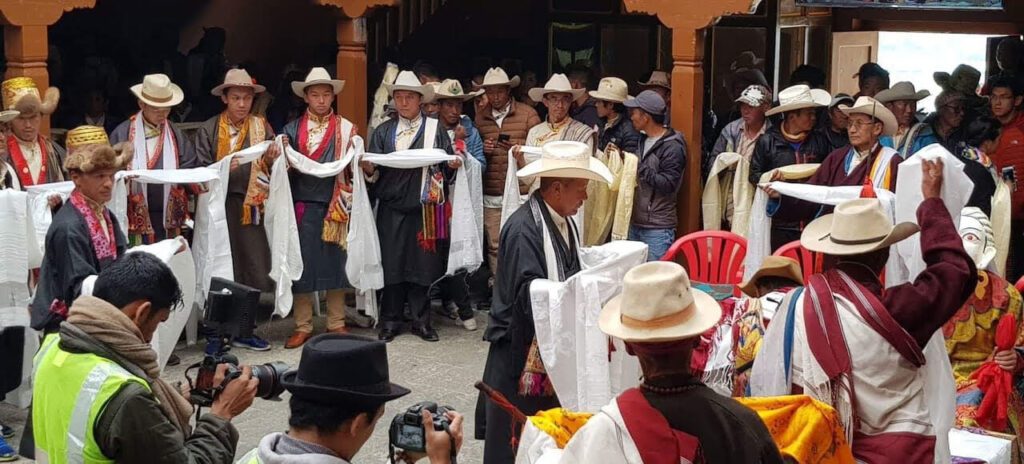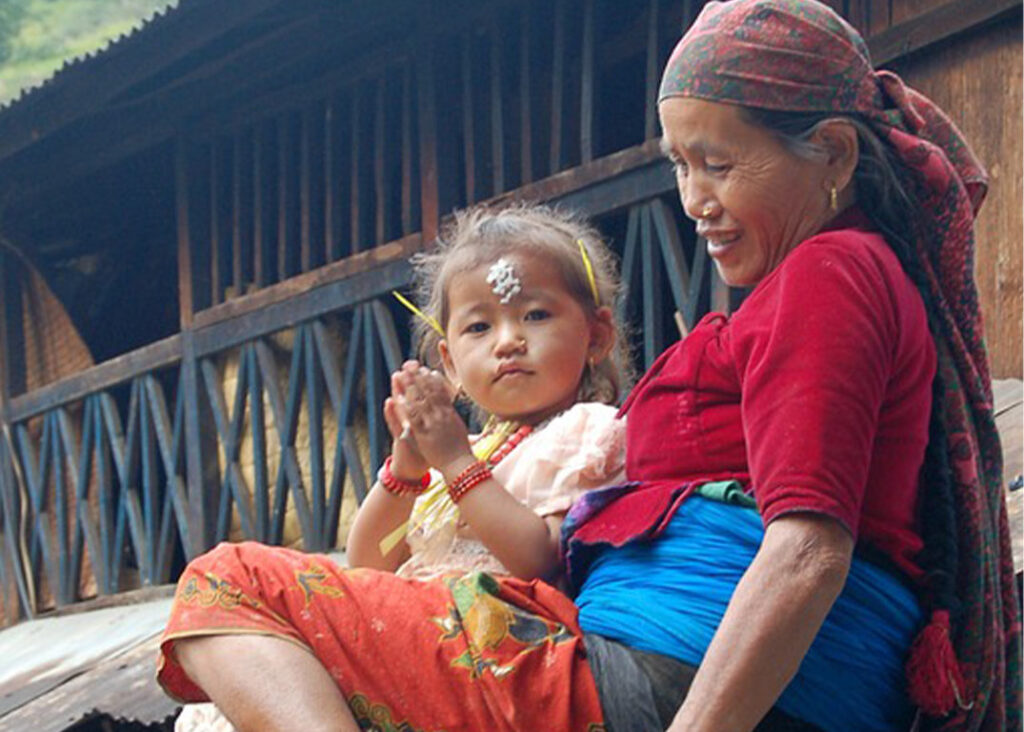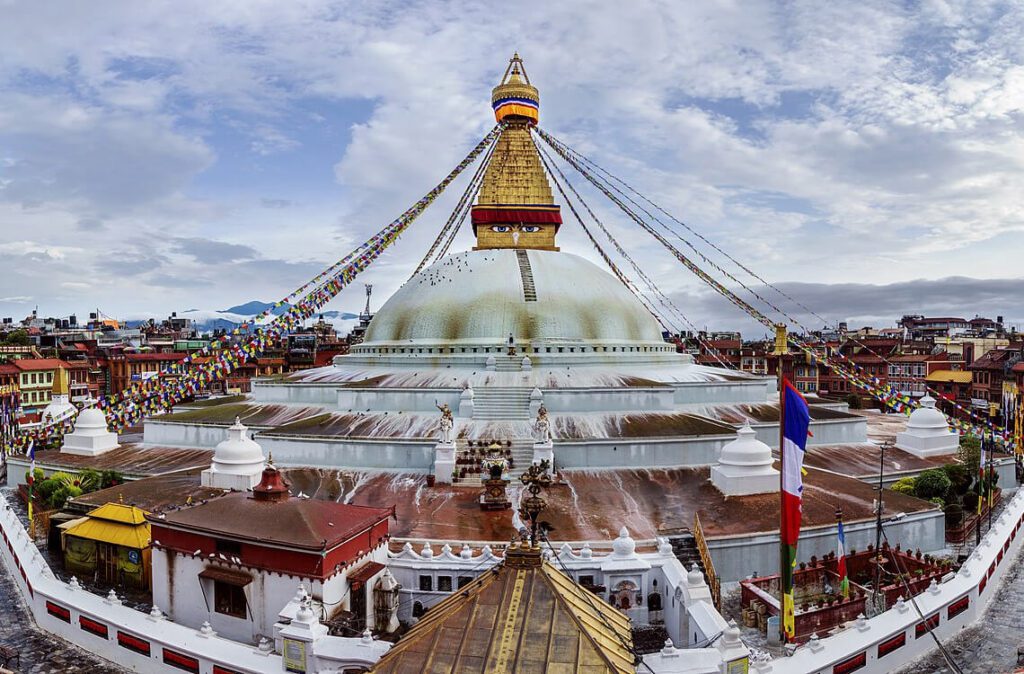Nepali Culture, heritage, and breathtaking landscapes are a land of diversity and enchantment. As a visitor to this beautiful country, it is essential to understand and respect the local customs and traditions.

Nepalese people are known for their warmth, hospitality, and deep–rooted cultural values. By familiarizing yourself with some basic etiquette, you can navigate Nepal’s social landscape with ease while building meaningful connections with the locals. In this blog, we will explore the fundamental etiquette practices that will enhance your experience and leave a positive impression.
Namaste: The Universal Greeting
Namaste is a traditional greeting used in various cultures across South Asia, particularly in Nepal and India. In Nepali culture, Namaste holds a deep cultural and spiritual significance, extending beyond a mere salutation or hello. It embodies a profound respect for others, an acknowledgment of the divine presence within each individual.

The act of bowing and offering the Namaste greeting is not limited to personal interactions but is also extended when entering a room addressing a group of people, or showing respect to elders, teachers, or spiritual figures. It is a way of showing gratitude and honoring the presence of others, regardless of their age, status, or social position.
Dressing Appropriately:
Respecting local customs and modesty is crucial when it comes to dressing in Nepal. In urban areas, modern attire is widely accepted, but it’s still advisable to dress modestly.
Also Read: 19 You Need To Know Before Visiting Nepal
Women should avoid wearing revealing or tight-fitting clothes while men should refrain from going shirtless or wearing excessively casual outfits in formal settings. When visiting religious sites, it is necessary to dress more conservatively, covering your shoulders and knees.
Removing Shoes
Nepali households and religious sites follow the practice of removing shoes before entering. This practice stems from the belief that shoes carry dirt and impurities from the outside world.

Always observe the shoe racks or designated areas near the entrance and remove your shoes accordingly. Socks or bare feet are acceptable inside the premises, but it is polite to keep your feet clean.
Dining Etiquette
Nepali cuisine is diverse and flavorful, and sharing a meal with others is a common practice. When invited to someone’s home, it is customary to bring a small gift or a token of appreciation.

As a guest, wait for the host to indicate where you should sit. In more traditional settings, meals are often eaten on the floor, sitting cross-legged. Wash your hands before the meal and use your right hand to eat, as the left hand is considered unclean. It is polite to accept second helpings and compliment the host on the delicious food.
Respect for Elders:
Respecting elders and showing deference to their wisdom is deeply ingrained in Nepali culture. When interacting with older individuals, use appropriate titles like “dai” (older brother), “didi” (older sister), “bhai” (brother), or “bahini” (sister) to address them. Seek their guidance and offer them seats before taking one for yourself. Showing respect to elders is a way of honoring their knowledge and experience.
Gift Giving
When invited to someone’s home or attending social gatherings, it is customary to bring a small gift as a token of appreciation. Popular gifts include flowers, sweets, or fruits. Avoid giving alcohol or items that may be inappropriate in the cultural context. Present the gift with both hands and express your gratitude for the invitation.
You may also like: Lukla Airport: Runway Length, Crash, History & More
Mindful Gestures and Body Language
Nepali culture places importance on being mindful of your gestures and body language. It is advisable to avoid pointing with your finger, especially at people, as it can be considered rude.
Instead, use an open hand or a nod to indicate something or someone. Crossing your legs or showing the soles of your feet toward someone is seen as disrespectful, so try to keep your feet planted on the ground.
Social Hierarchy and Status
Nepali society has a hierarchical structure, and it is important to be aware of this when interacting with others. Use appropriate titles to address individuals based on their age, position, or social status.
Showing respect and deference to authority figures or elders is customary, and it is considered polite to wait for them to initiate conversations or gestures.
Photography Etiquette
Nepal is a country of breathtaking landscapes and cultural wonders, making it a popular destination for photography enthusiasts. However, it is important to be respectful when taking photographs, especially on religious sites or when capturing images of local people.

Always seek permission before taking someone’s photograph, and be mindful of any restrictions or guidelines in sensitive areas.
Communication Style
Nepali communication style tends to be indirect and polite. People may use subtle hints or gestures rather than direct statements. It is important to listen attentively and read between the lines to understand the intended message. Be patient and considerate in conversations, allowing others to express their thoughts and opinions fully.
Gift Giving with Both Hands
When giving or receiving items it is considered respectful to use both hands. Present the gift or receive it with both hands as a sign of courtesy and gratitude. This gesture demonstrates your appreciation for the gesture and shows that you are fully engaged in the exchange.
Popular: Nepal’s Top Adventure Spots
Avoiding Disrespecting Symbols and Traditions
Nepal boasts a diverse and vibrant cultural and religious legacy, characterized by its richness. It is of utmost importance to exhibit reverence towards these esteemed symbols and traditions and refrain from engaging in any actions that could be perceived as disrespectful. One should refrain from walking on religious icons or sculptures, as well as resist the temptation to touch or climb holy structures.







